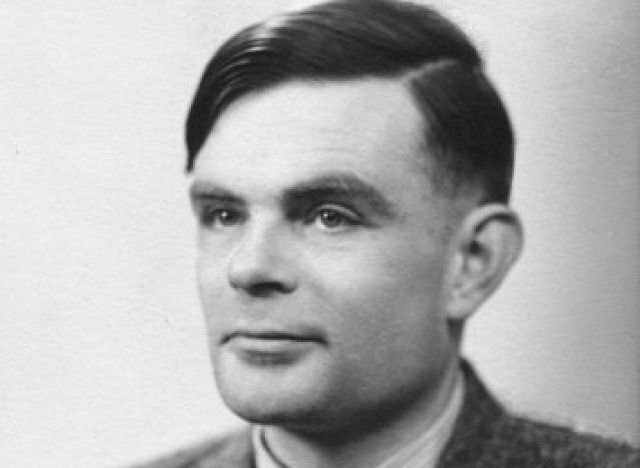The last surviving code-breaker from the Second World War has received an MBE in the New Year Honours.
Bletchley Park mastermind Raymond "Jerry" Roberts spent the war deciphering Hitler's secret ciphers alongside pioneering mathematicians such as Alan Turing.
The 92-year-old said he was "delighted" to receive honour, but hoped that one day his whole team will be recognised for their contribution.

Roberts in his Bletchley Park days
Roberts was one of the four founder members of the Testery section at Bletchley Park - the team tasked with breaking the German High Command's most top-level code Tunny.
Tunny decrypts are credited with helping shorten the war by at least two years.
Bletchley Park's "4T's" include the Testery as a whole, and three colleagues responsible for major discoveries - Alan Turing who broke the naval Enigma; Bill Tutte who broke the Tunny system to help shorten the war; and Tommy Flowers, who designed and built the Colossus, which sped up some stages of the breaking of Tunny traffic.
Roberts, from Hampshire, has spent the last four years campaigning for his former colleagues to be recognised.
Turing is perhaps the most well-known for being a brilliant mathematician and the founder of the early computer.

Turing is widely considered the father of computer science and artificial intelligence.
In 1952, he was convicted of 'gross indecency' with another man, a conviction for the-then illegal act of homosexual sex.
Turing chose to be chemically castrated by being injected with female hormones rather than go to prison. Two years after his conviction he died of cyanide poisoning, a verdict recorded as suicide at his inquest. A petition to grant Turing a public pardon has gained more than 35,000 signatures on the government's website.
Today he said he and his wife Mei are delighted with the MBE, and paid tribute to his so-far unrecognised team in the Testery.
"I was very pleased and Mei was very pleased. She is delighted," he said.
"She is very pleased that something has come through, we both wish it could have been a bit more, not because we are fixed on titles, but just in gesture to those other guys - the Testery.
"They did a brilliant job, we were breaking 90% of the German traffic through '41 to '45.
"We worked for three years on Tunny material and were breaking, at a conservative estimate, just under 64,000 top line messages.
"It was an exciting time because once you start getting a break on a message and seeing it through and getting it."

Capt Roberts, master codebreaker, has received an MBE
Capt Roberts, who has seven children and stepchildren altogether, as well as a grandson, said his family were delighted.
But he said he would like to see the Testery itself formally honoured for its work, adding: "There were 118 of us altogether doing various different functions. There's one other person still alive that I know of."
Capt Roberts, from Liphook in Hampshire, has featured on TV programmes on Bletchley Park and is now writing his autobiography.
He has already met the Queen when she visited Bletchley Park in July 2011 in what he described as one of the highlights of his life, and said collecting his MBE would be another special moment.
Of the "unexpected" meeting last year, he said: "It was only two days before that I was asked to be sure to be at the park, but they didn't say why. It was very interesting.
"I stationed myself by the Tunny machine, which did all the enciphering, so I was able to show it to her and she was very interested.
"Usually you get a warm handshake and a smile, I got five smiles, she was delightful. It was one of the highlights of my life."
The difficulty of cracking the World War II codes was illustrated recently when an encrypted message was discovered on the remains of a carrier pigeon.
GCHQ experts had been trying to break the code since August, when "Percy" - the aforementioned pigeon - was found in the chimney of a house in Surrey. But they now say the message was so skilfully written, they can't crack it without access to the "original cryptographic material.